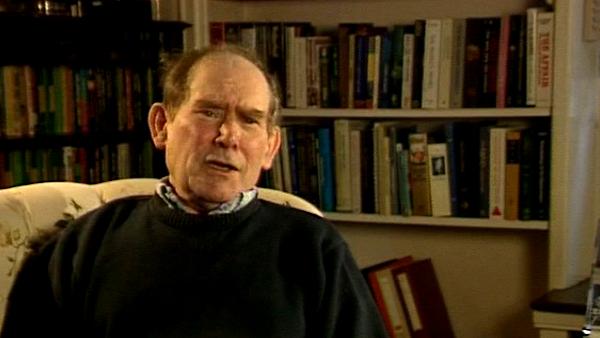NEXT STORY

Schrödinger's belief in calculating an organism from chromosomes
RELATED STORIES

NEXT STORY

Schrödinger's belief in calculating an organism from chromosomes
RELATED STORIES


|
Views | Duration | |
|---|---|---|---|
| 41. Scientific work undertaken during medical school | 341 | 05:01 | |
| 42. Experiments: really finding things out | 506 | 02:28 | |
| 43. Cambridge or Oxford? | 570 | 02:36 | |
| 44. Hunting for future-proof sciences | 450 | 04:54 | |
| 45. John von Neumann and the history of DNA and self-replication | 2 | 1749 | 07:11 |
| 46. Schrödinger wrong, von Neumann right. | 1490 | 02:05 | |
| 47. Schrödinger's belief in calculating an organism from... | 1026 | 05:00 | |
| 48. Automata akin to living cells | 945 | 03:21 | |
| 49. Biology doesn't allow for relaxing baths | 698 | 01:37 | |
| 50. Work on phage with Hinshelwood in Oxford | 443 | 05:32 |


I think he made a fundamental error, and the fundamental error can be seen in his idea of what the chromosome contained. He says… in describing what he calls the code script, he says, 'The chromosome structures are at the same time instrumental in bringing about the development they foreshadow. They are law code and executive power, or to use another simile, they are the architect's plan and the builder's craft in one.' And in our modern parlance, we would say, 'They not only contain the program but the means to execute the program'. And that is wrong, because they don't contain the means; they only contain a description of the means to execute it. Now the person that got it right and got it right before DNA is von Neumann in developing the logic of self-reproducing automata which was based of course on Turing's previous idea of automaton and he gives this description of this automaton which has one part that is the machine; this machine is built under the instructions of a code script, that is a program and of course there's another part to the machine that actually has to copy the program and insert a copy in the new machine. So he very clearly distinguishes between the things that read the program and the program itself. In other words, the program has to build the machinery to execute the program and in fact he says it's… when he tries to talk about the biological significance of this abstract theory, he says: 'This automaton E has some further attractive sides, which I shall not go into at this time at any length'.
South African Sydney Brenner (1927-2019) was awarded the Nobel Prize in Physiology or Medicine in 2002. His joint discovery of messenger RNA, and, in more recent years, his development of gene cloning, sequencing and manipulation techniques along with his work for the Human Genome Project have led to his standing as a pioneer in the field of genetics and molecular biology.
Title: Schrödinger wrong, von Neumann right.
Listeners: Lewis Wolpert
Lewis Wolpert is Professor of Biology as Applied to Medicine in the Department of Anatomy and Developmental Biology of University College, London. His research interests are in the mechanisms involved in the development of the embryo. He was originally trained as a civil engineer in South Africa but changed to research in cell biology at King's College, London in 1955. He was made a Fellow of the Royal Society in 1980 and awarded the CBE in 1990. He was made a Fellow of the Royal Society of Literature in 1999. He has presented science on both radio and TV and for five years was Chairman of the Committee for the Public Understanding of Science.
Tags: Erwin Schrödinger, John von Neumann, Alan Turing
Duration: 2 minutes, 6 seconds
Date story recorded: April-May 1994
Date story went live: 24 January 2008